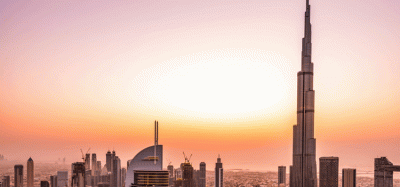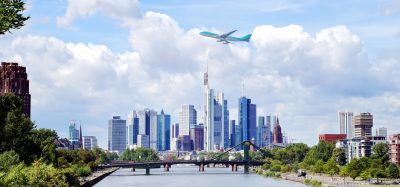Aviation’s Post-Crisis Recovery Series: London City Airport
Posted: 2 July 2021 | Robert Sinclair | No comments yet
In the next instalment of International Airport Review’s exclusive series, the Chief Executive Officer of London City Airport, Robert Sinclair, explains how the long-term approach applied to every aspect of the airport’s strategy and decision making will be key in its recovery.
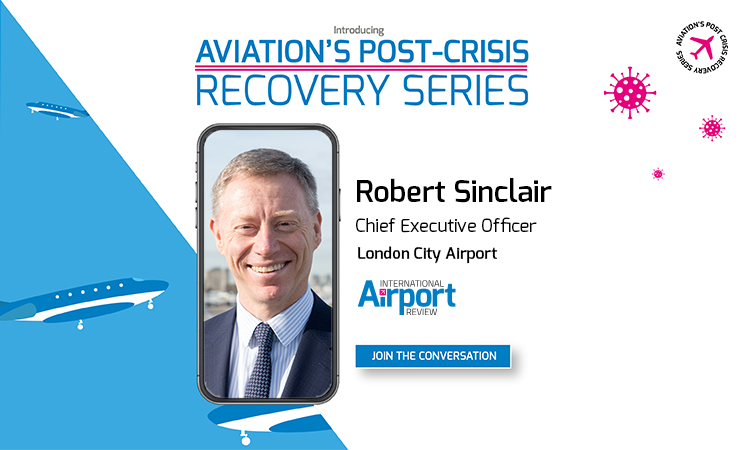

The COVID-19 pandemic has been completely unprecedented in its impact on the aviation industry. How has it impacted London City Airport?
Like other airports in the UK and Europe, the COVID-19 pandemic has had a significant impact on London City Airport (LCY), with travel restrictions, quarantine rules and border closures resulting in an unprecedented collapse in demand.
Passenger numbers in 2020 were down circa 82 per cent on the record 5.1 million passengers who used the airport in 2019. In this context, we have had to contend with little revenue for over 12 months, meaning that steps have had to be taken to reduce expenditure.
Our City Airport Development programme was paused at the end of 2020 following the completion of key airfield infrastructure projects, such as the parallel taxiway and new aircraft stands. In addition, regrettably, a restructuring of the business in autumn 2020 resulted in approximately 40 per cent of staff leaving the airport. These decisions were very difficult, but, unfortunately, needed to be taken to safeguard our recovery.
Throughout the pandemic, we have taken a very long-term approach to all of our decisions and with all of our many stakeholders. We have always remained very confident in the airport’s vision for responsible and sustainable growth, based on our speed, convenient location and excellent customer service.
What immediate changes did you have to make in response to the pandemic, and what did you find the hardest problem to tackle?
At the height of the first lockdown in March 2020, the airport temporarily ceased commercial operations for three months, re-opening in June 2020. During this period, we focused on supporting our staff and the local community and made significant progress on the airside elements of our development programme. The airfield was also made available to assist the COVID-19 relief effort in London and was on standby to support the NHS Nightingale hospital at the nearby ExCel Centre. The majority of LCY staff were furloughed, and £50,000 from the airport’s Community Fund was also donated to nine local foodbanks.
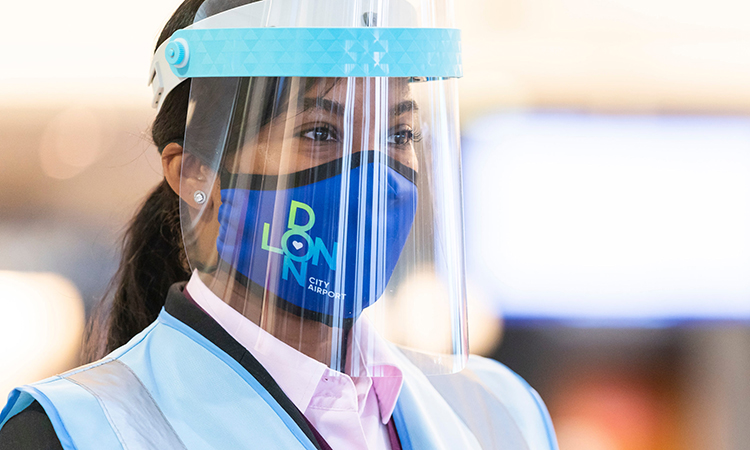

Credit: London City Airport
A key challenge in summer 2020 was ensuring that we could deliver a COVID-secure environment for staff, airlines, business partners and the local community upon re-opening. This required the implementation of new health and safety measures, including enhanced cleaning regimes, automatic temperature checking and utilising Crowd Vision technology to maintain social distancing. This work culminated in LCY becoming only the second UK airport to achieve Airports Council International’s (ACI) Airport Health Accreditation (AHA) standard. We have also received an International Civil Aviation Organization (ICAO) approved health accreditation following a recent assessment by Public Health England (PHE) and the UK Civil Aviation Authority (CAA).
What initiatives are you focusing on during 2021 to rebuild passenger confidence?
The speed, safety and convenience of London City in the heart of the capital means that we are well placed to serve our leisure and business passengers as travel restrictions are eased.
We have produced a video for passengers showcasing the health measures that are in place to enable safe and speedy journeys. The airport has also launched a new online portal to help customers to understand the latest COVID-19 data and the testing and quarantine requirements of their destination, simplifying the booking experience and enabling passengers to make informed travel choices.
Working with our airlines, we expect to offer flights to over 30 destinations in summer 2021 across the UK and Europe. This includes core routes to Edinburgh, Belfast, Zurich and Amsterdam; summer leisure routes to Ibiza, Malaga, Faro, Mykonos and Palma; and new routes to Jersey, Guernsey, Gibraltar, Split and San Sebastian. Passengers can book the full range of COVID-19 tests for all international markets at LCY’s onsite testing centre.
What other exciting projects/developments are in the pipeline at London City Airport to help cope with increased passenger numbers once air travel begins to pick-up again?
The airport recently became the first major international airport in the world to be fully controlled by a remote digital air traffic control (ATC) tower, following over two years of intensive testing and live trials of this pioneering technology to ensure that it is safe and secure.
Our state-of-the-art 50m digital tower is now enabling flights to be remotely guided to land or take-off by air traffic controllers (ATCOs) based at NATS in Swanwick, Hampshire. This investment in smart infrastructure will improve our operational efficiency and air traffic management (ATM) capability, as well as help us to meet future growth in passenger demand.
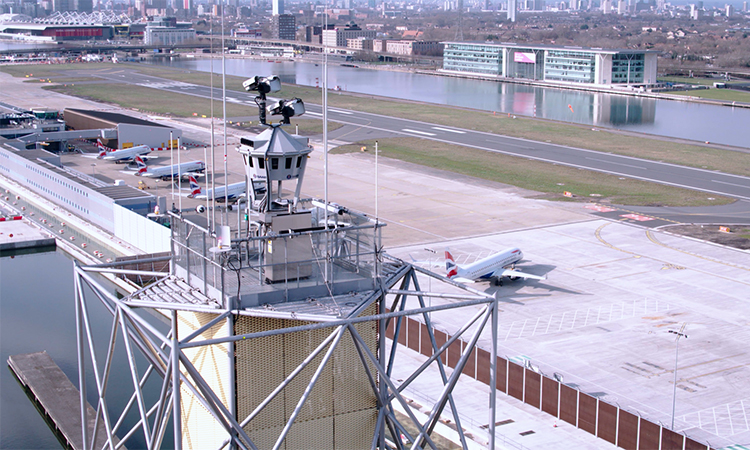

Credit: London City Airport
The airport is also expanding our onsite testing facility to help to cater for the increased demand for COVID-19 tests for international markets as more passengers return to the airport in summer 2021.
We are also making progress with our long-term sustainability ambitions. The airport is involved in several ‘future of flight’ projects, examining the potential for the development of hybrid and electric aircraft over the next 10 to 15 years as part of the journey to net zero aviation.
Are there any initiatives that you have implemented during the COVID-19 pandemic that you will permanently integrate into your airport’s strategy, even once the crisis has passed?
Health and safety will likely remain at the forefront of customer expectations once the crisis has subsided. Our comprehensive health measures, onsite testing centre and quick and convenient airport experience mean that we are ready to welcome back, and increase, our passenger volumes.
Equally, digital solutions will be important in the future. This goes beyond the current debate on ‘vaccine passports’, to examining how the end-to-end passenger journey can be made easier and more efficient by utilising the latest technology.
One notable project is upgrading our e-gates in partnership with UK Border Force to provide passengers with a seamless, digital-first experience at the border.
Sustainability remains a key issue for the industry and, despite the downturn, we have continued to invest in building a better, more sustainable airport. Our enhanced airfield infrastructure – the full-length parallel taxiway and eight new aircraft stands – will enable us to accommodate more of the cleaner, quieter next generation aircraft in the future, helping us to reduce carbon emissions.
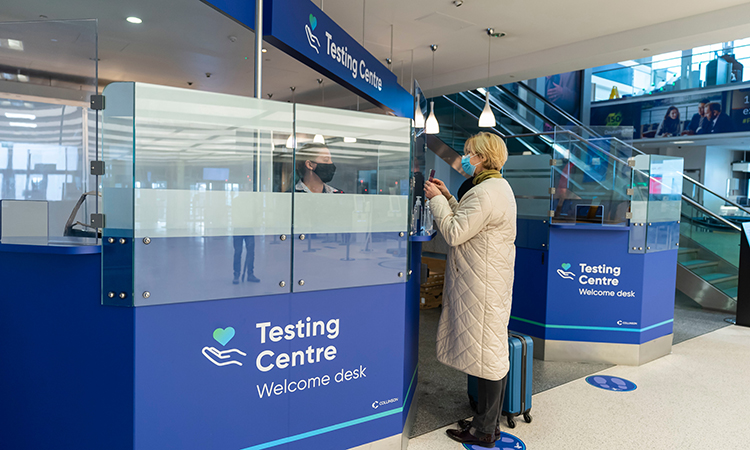

Credit: London City Airport
What business activity are you forecasting for London City Airport/ what is your business outlook?
Our financial position is strong, and we are backed by committed, long-term shareholders. We are focused on rebuilding our airline networks and encouraging passengers to return as travel restrictions are eased.
We know that there is pent-up demand, particularly for leisure travel, and, as more people return to their offices, business travel should pick up in autumn 2021.
However, a lot will depend on the UK government’s approach to restarting international travel and the testing and quarantine rules that will apply as part of the new traffic light system. Greater clarity and certainty would help our airlines to plan their schedules and passengers to book with confidence.
We hope that the ‘green list’ will be expanded as more countries achieve higher levels of vaccination, and fully vaccinated travellers should not have to quarantine. Testing requirements also need to be simple, practical and affordable.
While there is a long way to go, we are cautiously optimistic that there will be a rebound in summer 2021. Passengers want to resume flying, and aviation has a vital role to play in London’s economic recovery and the UK’s future as a global trading nation.
Robert Sinclair joined London City Airport as Chief Executive Officer (CEO) on 30 October 2017, bringing a broad range of airport management and general business experience with him to the role.
Prior to his role at LCY, Sinclair was CEO of Bristol Airport for nine years between 2008 and 2017. During that time, Sinclair worked with his senior management team to lead the business through the recession in the UK, achieving record passenger volumes, securing a comprehensive planning approval to expand the airport and completing a significant development programme. He was instrumental in creating a new brand and vision focused on improving the passenger experience.
Prior to his role at Bristol Airport, Sinclair was Chief Financial Officer (CFO) at Auckland Airport, with responsibility for the finance, strategy, corporate affairs and IT divisions at New Zealand’s international gateway airport.
Sinclair is a qualified lawyer and chartered accountant with a background in professional services and banking and has worked in Auckland, Sydney, New York, Hong Kong and London.
He is a Board member of the Airport Operator’s Association (AOA), the UK’s airport trade association, and Airports Council International (ACI) Europe, Europe’s airport trade association.
Join our free webinar: Beyond silos: How ecosystem thinking elevates the airport experience
In today’s complex aviation landscape, airports are moving beyond siloed operations to embrace a new era of collaboration. This webinar focuses on how leading airports are using ecosystem thinking to adapt, personalize, and continuously improve every touchpoint, boosting both passenger satisfaction and non-aeronautical revenue.
Date: 13 Nov | Time: 10:00 GMT
REGISTER NOW TO SECURE YOUR SPOT
Can’t attend live? No worries – register to receive the recording post-event.
Related topics
Air traffic control/management (ATC/ATM), Aircraft, Airport Carbon Accreditation (ACA), Airport construction and design, Airport crisis management, Airside operations, Aviation's Post-Crisis Recovery Series, COVID-19, Economy, Emissions, Funding and finance, New technologies, Non-aeronautical revenue, Passenger experience and seamless travel, Passenger volumes, Regulation and Legislation, Safety, Sustainability, Sustainable development, Terminal operations, Workforce
Related airports
Related organisations
Airports Council International (ACI World), Civil Aviation Authority (CAA), International Civil Aviation Organization (ICAO), NATS, Public Health England, UK Border Force, UK Government





